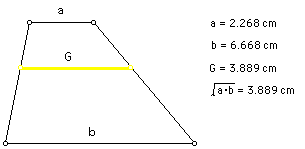

Given trapezoid KLMN, with KL // NM, KL = a, and NM = b.
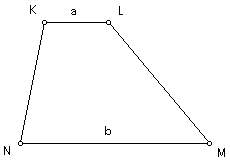
Construct a line through points N and M. Construct a circle with center at point N and with radius = a. Construct the point where this circle intersects line NM but does not intersect segment NM. Call this point R.
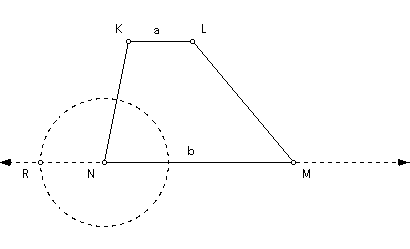
Construct segment RM. By construction, RM = a + b. Construct the midpoint of segment RM and call it point S.

Construct a circle with center at point S and passing through point R. The radius of this circle equals the length of segment RS, which is (a + b)/ 2 by construction.
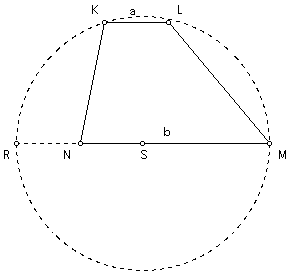
Construct a line perpendicular to segment RM at point N. Construct the intersection of the above circle and this line and call it point T. Now, triangle RTM is a right triangle with right angle RTM, since the triangle is inscribed in a circle and its hypotenuse is a diameter of the circle. Since line TN is the altitude drawn from the right angle to the hypotenuse, its length is the geometric mean of segments RN and NM. Therefore, the length of segment TN = sqrt (ab) by the definition of geometric mean.

Construct a circle with center at point N and passing through point T. Construct the intersection of this circle and segment NM and call it point U. Since TN and NU are radii of the same circle, TN = NU = sqrt(ab).
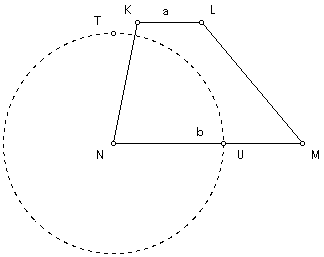
Construct a line parallel to leg KN through point U. Call the intersection of this line and leg LM point Q. Construct a line parallel to base NM through point Q. Call the intersection of this line with leg KN point P. By construction, quadrilateral PQUN is a parallelogram, and so PQ = NU = sqrt(ab).
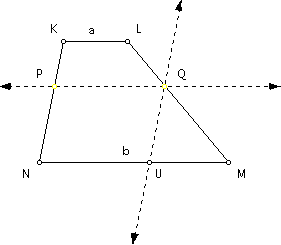
Construct segment PQ. The length of this segment is the geometric mean, "G," of the bases KL and NM.
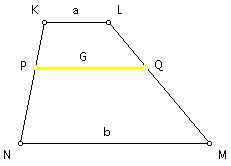
Double check the construction by taking measurements and using the equation for finding the geometric mean.
